Parenting a dog is a daunting task, especially, when it comes to looking after their grooming session. Just like humans, dogs also need a self-care day for their skin, hair, and coat. As it helps them to retain their natural beauty and the glowing touch of their coats. But, the question arises, how often should you groom your dog?
Well, to answer all your questions and doubts, we have prepared a grooming guide for you. Which is classified into different sections. Such as: how long your dog can go without grooming, how often should dogs be groomed, and how you know it’s time to groom him. Or, grooming sessions for different types of hair lengths, coats, etc…
In this blog, we will explore all these answers and useful tips for regular grooming. Which will help to keep your pup happy, neat and tidy, and free from skin diseases or bacterial infections. So, let’s jump into all things grooming-related, so that you get familiar with what works best for each particular breed.
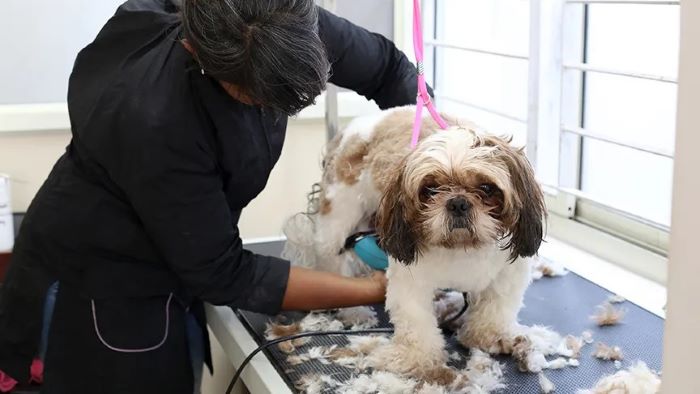
How Often Should You Groom Your Dog?
Grooming your canine companion is mandatory, it helps to keep their fur, healthy and glowy. Generally, regular grooming is a nice idea, it helps to remove dirt, and mats, from their fur, and untangle their knots. All you need to do is keep a practice of regular combing/brushing his/her hair, and bathing every four weeks to retain a smooth glowing look.
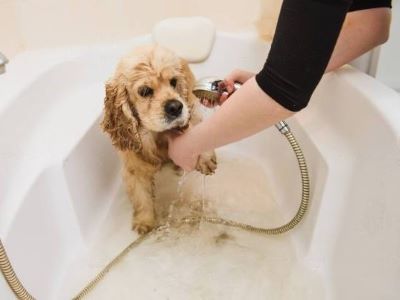
Apart from hair, it’s also important to trim their nails regularly. So that they don’t hurt themselves, or damage your furniture by scratching. Plus, cleaning their teeth, and mouth after every meal will help them to reduce the chances of facing dental issues, and kill bacteria.
So, book an appointment with the groomer every four to six weeks to give proper bathing, and, every eight to twelve weeks for a nice haircut or trim. It is best practice to set up a regular schedule for grooming sessions.
Getting into good habits now will provide long-term health benefits down the line.
How Long Can a Dog Go Without Grooming?
It solely depends upon the breed you are parenting, the type of hair, and the coat of your canine companion. It has been observed that dogs with short hair, can go without grooming for at least six weeks in a row. On the other hand, the one with smooth silky long hair needs grooming[1] sessions every four to six weeks, and daily combing is mandatory for them. If you miss it, you have to face skin allergies and bacterial infections.
So, if you wish to keep your furry pal neat and tidy, their fur glowy, and flowy. It is recommended to not skip the grooming sessions, and take complete care of their skin, hair, and coat.
Is It OK Not to Groom My Dog?
Well, no, it’s not recommended to overlook their hygiene and skip their grooming session on a frequent basis. For them grooming session not only means adding a spark to their personality, or having a new look, it helps them to remain free from skin-related diseases, bacterial infection, or fleas issues.
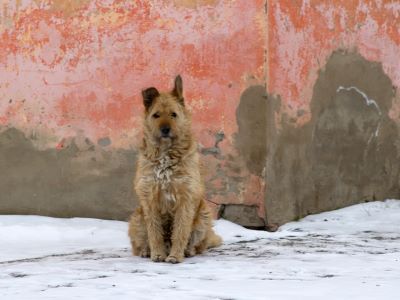
Along with hair care, and a coat, it’s also important to clean their mouth, and ears to get rid of bacterial infections. Plus, trimming nails is also one of the important factors of the grooming session. As it reduces the risk of scratching his paws on furniture, floor, or hut themselves or you while snuggling.
For your canine companion’s better skin health, don’t neglect to take them to the groomer, and get all the mandatory things done. It will also help to keep them happy, neat and tidy.
How Do I Know If My Dog Needs a Groom?
Dogs do indicate by giving signs and expressing their feeling. So, when your canine companion is not receiving enough grooming sessions, his/her body will indicate few signs/symptoms. It will warn you it’s high time to take a look, or else you both need to visit the vet for skin-related issues.
Here, we have jotted down the basic symptoms, which will give you a signal to take him to the grooming centre asap!
- One of the early signs is the visibility of the dirt, mat on his fur, unpleasant odour, and tangled hair knots. These are the basic signals he needs to visit a professional groomer. If you delay in taking an appointment, then there are chances he will be getting affected by debris, skin allergies, and bacterial infections.
- Pay attention to their nails. It’s true many dogs do naturally trim their nails, but with time and age your canine companion doesn’t groom himself much. So, it’s your responsibility to take good care of him. It’s necessary to trim their nails because while playing, and scratching they could hurt themselves and others as well.
- Dry skin patches on your dog’s body are a sign of irritation, such as itching and scratching. Allergic reactions can sometimes occur due to poor grooming habits. So, if you notice these symptoms, then you should take him for a session. This could be a sign of dermatitis in dogs, which requires treatment.
- Bad odour is also one of the signals he needs good bathing and shampooing to get rid of the awful odour and have a smooth shiny, and silky look.
These are a few signs, if you encounter any such, then it is recommended not to waste more time. And take your canine companion to the groomer immediately because he needs a professional groomer for better skin care.
How Often Do Dogs With Different Hair Types Need to Be Groomed?
As we already know, a grooming session is important for your canine companion. It helps to keep their fur/hair, coat, and skin healthy and shiny. Plus, prevent them from encountering skin allergies, fleas, or tick issues in the future. In addition, not everyone has the same hair quality, and length, so now we will explore how often dogs with different hair length, and coat needs grooming session.
Let’s have a look, at how often should you groom your dog! And decide how often your dog needs a grooming session, on the basis of hair length and coat.
1. Short Haired
If you are parenting a short hair breed, then there is no grooming issue for you. As they require fewer grooming sessions compared to other coat and hair type breeds. For instance, bathing every four to six weeks, and brushing at least once a week is more than enough for short hair breeds. It helps you to easily remove the mats and fleas, and overcome the damage issue before it gets worsen.
However, fewer grooming session does not mean you will overlook them. Practising good hygiene habits will help you give them a healthy and clean look. Such as combing, cleaning the mouth and ears, trimming nails, and removing dead hair.
So, do take proper care of short hair breeds. By giving them clean look, and have happy grooming sessions to add a spark to their personality.
2. Long Haired
Well, long-haired dog breeds require more frequent grooming sessions, yes, you heard it right! If you want your canine companion’s hair well maintained, long, and shiny. Then at least twice a day brushing/combing is mandatory. This is because if you don’t comb it regularly, it will lead to tangle issues. Including other issues such as fleas, and ticks sticking to their coat, which can damage their coat or skin badly.
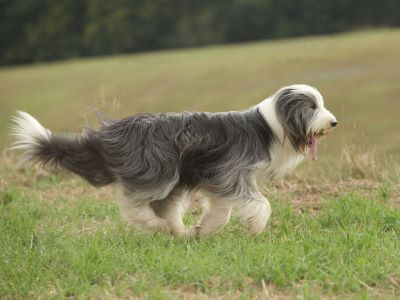
They need to be bathed in the gap of at least four to six weeks. And need to be taken to a grooming centre for trimming, sitting hair, and shampoo in the gap of eight to twelve weeks. Apart from the grooming centre, when you comb his hair on regular basis, make sure you remove dead hair, and untangle the knots. All these will help to keep the shine of the coat and hair will remain healthy long and beautiful.
Advice for you is always to use specially formulated shampoo for long hair. It will not only be useful for long hair, but also prevent the skin from damaging. As no harsh ingredients are used in this formulated shampoo.
You could also try using special conditioners after baths, which will help improve detangling abilities while providing extra moisture protection.
3. Silky Hair
If you are parenting a breed with silky hair, such as Yorkies, Shih Tzus, and Maltese breeds. Then listen to it very carefully, you need to maintain their beautiful long silky hair and shiny coat. Giving extra care, and also requires a lot of grooming, so be prepared to spend extra money every month.
These silky hair breeds need to be groomed every four to six weeks. It includes brushing their coat on a regular basis. It not only helps to untangle the knots but also prevents fleas, ticks, matting, etc… Apart from coat and hair care, you need to trim their nails, and clean their ears and mouth.
For silky haired breeds like Yorkies, using the best antibacterial and antifungal dog shampoo uk can help prevent flaky or irritated skin under their soft coats.
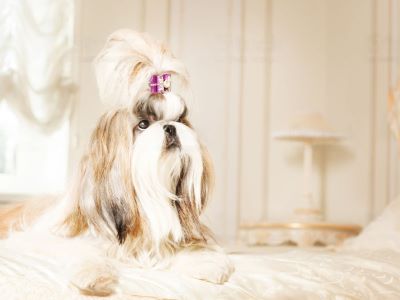
Furthermore, do look for an experienced stylist, they will guide you better in terms of giving new look every three to four months. And they will be using specially designed equipment for trimming or cutting. So, you just need to relax while your canine companion is having a good grooming session.
Additionally, it’s recommended to bathe them once a month. Plus, use specially formulated shampoo to avoid dryness of skin and coat. Plus, regular combing helps you to evenly distribute natural oil all over their coat and adds shininess.
During the shedding period, you need to be extra careful with their combing and grooming sessions.
4. Thick Undercoat
Well, dogs with thick undercoats need regular brushing and should be taken to the grooming session on a monthly basis. Where proper bathing and undercoat should be shaved with special design equipment, and not with sharp blades, as it can hurt your canine companion.
Furthermore, these type of breeds has an extra furry layer, which requires more brushing to prevent fleas, matting, etc… Plus, the grooming frequency also depends on their undercoat quality, and how many times they shed during a whole year.
In addition, it is recommended to go for a regular skin check-up. Such as flea bites, or hot spots, as it helps you to ensure your canine companion’s skin is healthy.
Plus, when it is done correctly, over time your furry pal will start enjoying the grooming session. It will make him more attractive and add shininess to his skin, hair, and coat.
5. Curly Hair
If your dog has curly or wavy hair, prepare for extra effort. This is because these type of breeds requires a regular hair care routine, and their grooming sessions are also frequent. As compared to other hair types of breeds.
For instance, they require daily brushing sessions i.e. two to three times a day. So, that there will be fewer chances of getting hair knots. Plus, in the interval of three to four weeks, a groomer visit is a must, for bathing, and haircut every two months. Following these routine tips help you to keep your canine companion neat and tidy, reduce the chances of getting fleas, and maintain their coat shine.
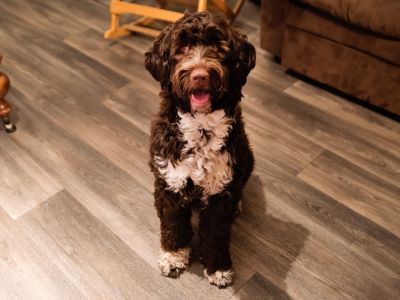
Here’s advice for you, when brushing at home, then do use a gentle comb or brush. So, that you don’t hurt their skin or damage their hair. In addition, regular combing will help you distribute natural oils throughout their coats, which help to keep their coat shiny and healthy.
Curly coated dogs tend to be more prone to fleas, so using a natural flea treatment for dogs uk can help prevent infestations without drying out their sensitive skin
So, make sure to follow these tips to ensure always getting the job done right!
FAQs
What dog breeds should not be groomed?
Dog breeds who seasonally shed huge clumps, or thick fur, are not advisable to take them to the grooming session. This is because it’s not a good idea to shave them, it will reduce hair growth, so only advisable for nail trimming, removing fleas, untangling long hair, etc… For instance, golden retrievers, German shepherds, and Siberian Huskies fall under those dog breed sections, which should never be shaved.
Do dogs feel better after they are groomed?
It solely depends upon your dog’s behaviour whether he is outgoing or introverted. The majority of the dogs do really get happy after a good grooming session. As they get the chance to interact with other pets and observe people around them. Plus, they get a clean and different look, which makes them happy. But, on the other hand, dogs are also more introverted, so yeah, they don’t like going to grooming sessions and feel dull after that for a few moments.
Can dogs get too old to groom?
Well, you can safely take your oldie canine companion to the grooming session, there is no harm or danger in it. With age, they cannot groom themselves much, and their body is occupied with several health issues. So, it’s better to take them and give them a clean look; this will make them happy and feel much better.
Why do groomers keep dogs so long?
Well, it solely depends upon the individual breed, if you are parenting a long-hair breed then it’s possible that their grooming session is much longer than the other short hair one. This is because it takes a lot of time to untangle the long hair, gently apply the shampoo, remove fleas, and how much length needs to be kept, etc… The groomer will do some last-minute tidying up to ensure that everything looks right on your dog before dressing them and giving a final touch-up.
How do groomers deal with anxious dogs?
There are many techniques which groomers used to calm down anxious dogs. Among those, the desensitized technique is one of the useful, that many use during the grooming session. It involves a few tactics like keeping the blow-dryer or trimmer on, running nail clippers around him, keeping the scissors beside him, etc… By doing all these things, they are mentally preparing them to get started for the grooming session, and also keep their favourite treats.
Well, It’s a Wrap!
Concluding our blog on: How Often Should You Groom Your Dog? Confidently, we were able to serve you the appropriate answer to all your questions such as: how to groom your dog, and how often should a dog be groomed.
Now, you have an ample amount of knowledge regarding your furry pal’s hair, coat, grooming session, which type of hair needs how much time in a grooming session etc… Plus, be careful with the signs that indicated your pup needs a visit to the grooming session.
Furthermore, it is also important to remember that different breeds have a different style of hair and coat, so grooming session varies as per the requirement. Plus, the type of lifestyle also plays a vital role in how frequently they need to be groomed. For instance, if they spend more time outdoors, then they do need to visit regularly, and if he/she just snuggle at home then it will be vice versa.
Additionally, do good observation whether they encounter any allergy or skin disease after the grooming session, if so then visit the vet, and don’t take them frequently for a grooming session.
With all these things taken into consideration, we hope that our blog has helped answer the question ‘How often should I groom my dog?’
Reference:
- Grooming techniques – All about dog grooming. (n.d.).



